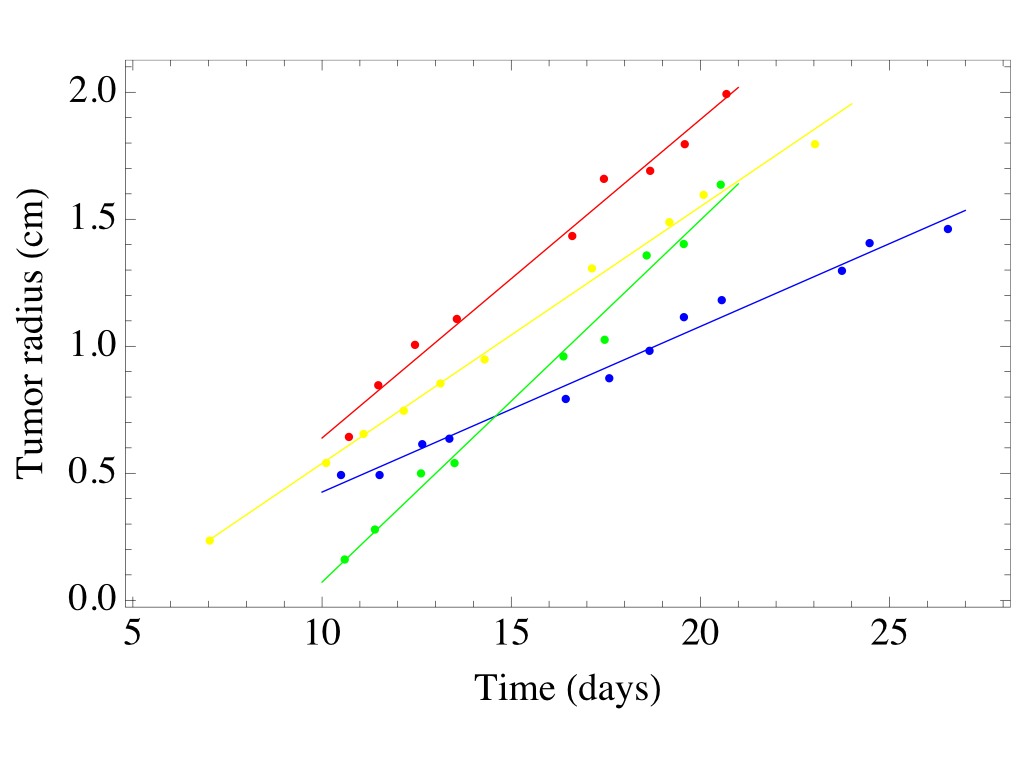The treatment of a tumor as a sphere in Example 3.5.14 of the textbook might seem simplistic but this simplification has provided important insight into the way that tumors grow. Consider the following classic data from experiments on a tumor called Jensen’s rat sarcoma (Mayneord 1932).

Shown is data for tumor radius plotted against time, as well as an approximating function (each colour represents one of four different tumors - data can be downloaded from the links on the left). These data reveal the somewhat surprising finding that the radius of these tumors grows linearly with time. Put another way, the rate of change of radius is constant. Why should this be so?
Suppose that each tumor is roughly spherical. In Example 3.5.14 of the textbook we showed that the rate of change of the volume of a sphere is related to the rate of change of its radius r according to the formula
The data in Figure 1 above show that dr/dt = k where k is a positive constant specific to a tumor (it is the slope of the line for each tumor in Figure 1). Furthermore , the surface area S of a sphere is given by
Therefore, the growth rate of tumor volume is
In other words, assuming the tumor is approximately spherical, the data show that the growth rate of tumor volume is proportional to the tumor’s surface area. Furthermore, we expect the volume of a tumor to be proportional to the number of cells it contains. Therefore, the data show that the growth rate of the number of tumor cells is proportional to the tumor’s surface area. This would be expected if it is only those tumor cells on the surface that are dividing (for example, because they are the only cells with access to nutrients and oxygen). Thus our simple spherical model of a tumor growth, coupled with the data in Figure 1, makes the prediction that it is only the surface tumor cells that are dividing. Dissection of growing tumors has in fact verified this prediction (Mayneord 1932).
References
Mayneord, W.V. 1932. On a law of growth of Jensen’s rat sarcoma. American Journal of Cancer 16:841-846